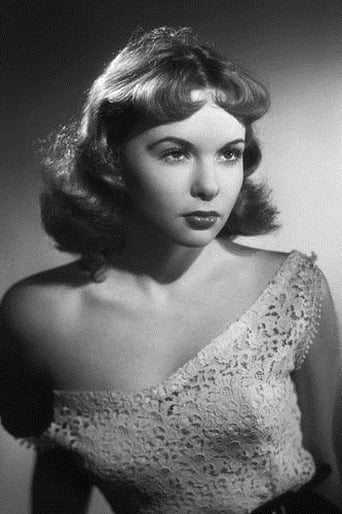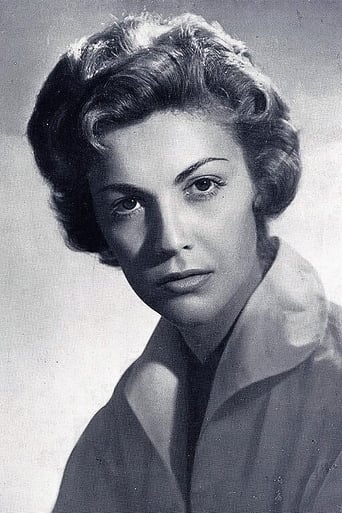CommentsXp
Best movie ever!
Plustown
A lot of perfectly good film show their cards early, establish a unique premise and let the audience explore a topic at a leisurely pace, without much in terms of surprise. this film is not one of those films.
Mathilde the Guild
Although I seem to have had higher expectations than I thought, the movie is super entertaining.
Zlatica
One of the worst ways to make a cult movie is to set out to make a cult movie.
cowboyandvampire
A charmingly amoral club owner sets his sights — amorous and financial — on a beautiful, naïve blue collar girl and propels her to the height of celebrity thanks to her titillating dance skills.It may sound like a contemporary, cutting edge urban drama, but French Cancan was made in 1956 by famed director Jean Renoir. The movie — a darkish comedy with a progressive take on sexuality — chronicles the birth of the Moulin Rouge. Legendary Jean Gabin plays Danglard, a world-weary hustler, club owner and anti-hero for the ages, who makes no pretense of his philandering and amorous proclivities. He's casting about for a new lover and a new money making venture when his current club fails and he grows bored with his mistress. He discovers a beautiful young washer girl, Nini, whom he convinces to headline at his new "concept" club, the Moulin Rouge, making it a hot spot and her a celebrity before the doors even open.It doesn't hurt that Nini's moody ex-lover — a sullen baker (le petit grump) — injures Danglard in a fight and an even moodier Russian count becomes suicidal because Nini spurns his advances. As the salacious headlines drive up public interest, they learn the club will feature the cancan in all it's thigh-revealing, petticoat-flashing, bawdy glory — a disreputable dance to begin with now fallen completely out of favor.The movie is a riot with memorable characters, beautiful, dizzying club and dance scenes, a few titillating moments that must have pushed the limits 60 years ago and swooning French girls forever throwing themselves desperately into and out of the arms of their lovers. You almost forget that it's a musical, so seamlessly are the musical and dance scenes integrated into the plot.Danglard's gangly side kick is hilarious as is the whistler. Most delightful of all was seeing and hearing the divine Edith Piaf on screen after listening in awe to her songs all these years.The movie is best enjoyed with absinthe in honor of the absinthe consumed on screen — as fate would have it, we had some delightful Oregon-made absinthe that night — or lots of champagne.-- www.cowboyandvampire.com --
dlee2012
Someone once described this film as a wonderful soufflé and they were quite right. Light-hearted and full of zest for life, the bold colours reflect the pure joy and optimism bursting from this Renoir vehicle.Unlike a Hollywood musical however, there is a slightly dark undertone that gives this film more depth. The lead character, played by the ever-talented Françoise Arnoul is an anti-heroine and the does little to generate empathy from her audience. Disloyal, selfish and ambitious her love affairs highlight her capricious nature and result in one attempted suicide.Far more likable are the male leads, each of whom is an interesting and, for a musical, well-drawn character, particularly the aristocrat who attempts suicide after he is treated so poorly by the girl. Bravely, Renoir leaves the love affair unresolved at the end, just as it would be in real life. The musical numbers are well-choreographed, the climax being one of the most dazzling scenes ever filmed with dancers bursting forth and flying everywhere. The pace of the film is rapid, reflecting the energy of the dance numbers. The sets are perhaps a little too sanitised for the music halls of the late nineteenth century but they reflect a nostalgia for an idealised past and a hope for the future as Europe left the Second World War behind. The lighting is bright throughout again reflecting the new optimism of the post-war age. Even in the darkest scenes of the clashes between Arnoul and her lovers, there is a brightness that, ironically, works well.Ultimately, this is a film about optimism but it is not a naive optimism that everything will be perfect. Hard choices will need to be made and people will be as selfish and ambitious as ever and the good people who try to care for them will still suffer through their total disregard for the feelings of others. Nevertheless, there is a hope that things are improving and that basic joys like that of the music hall and light entertainment, however banal, can be enjoyed once more with an innocence regained after the darkness of the 1940s and the reign of the Vichy Government.
bobsgrock
French Cancan is the type of film that cannot be made anymore, at least not in America. It is full of joy, joie de vivre, and an overwhelming sense of hope and encouragement. The genius of Jean Renoir lies in his ability to take a simple, rather mundane story and transform it with brilliant color palates, charming actors and gorgeous scenery that recalls earlier Hollywood musicals such as An American in Paris. Jean Gabin, that wonderful actor who also worked with Renoir in films like Grand Illusion and The Lower Depths, lends his easy-going charm and grace to the role of Dugland, a respected but unsuccessful dance club owner who decides to revive the classic French dance of the cancan, which requires finding fresh new faces complete with long, slim, flexible legs. The best dancer he finds is a laundress named Nini, played by Francoise Arnoul with such elegance and beauty it is hard to think of another actress with such charisma. She is truly a work of art herself and gives the film a whole other dimension with her smile and naiveté. Overall, the climatic scene is what truly grabs you. After the somewhat clichéd arguments between lovers and quarrels over rights of sleeping partners, we finally get to see what we want: a group of beautiful French girls dance the cancan. Beyond even that, Renoir films it at a high-pace energy level along with dazzling colors that fill our senses with wonder. Indeed, here we see the genius of Renoir not only in his ability to transform this material but also in showing foreign audiences the essence of French culture. Known to the outside world as impulsive, highly passionate people, Renoir seems to defend their behavior through dance and the reasons for which they celebrate life. Whether you like the French as a people or not, Renoir makes it very difficult to not appreciate their culture and all the richness and joy that comes with it.
marissas75
As a longtime admirer of the 2001 film "Moulin Rouge" and a more recent admirer of Jean Renoir's film-making, I knew that I'd inevitably watch his "French Cancan" sooner or later. The movie tells a fictionalized story of the opening of the Moulin Rouge nightclub. The impresario Danglard (Jean Gabin) tries to turn Montmartre laundress Nini (Françoise Arnoul) into a cancan star, without arousing the wrath of his tempestuous mistress, the belly-dancing Lola (Maria Felix). This is just one of several love triangles in "French Cancan"--true to stereotype, these French showbiz folk are always falling in love.Renoir directs with his typical gentle humor and attention to supporting characters, and also wrote the lyrics to a beautiful waltz song prominently featured in the movie. Gabin perfectly incarnates the aging French playboy hero. Arnoul is a cute redhead who holds her own in the dance numbers, except for a few trick shots where a double is obviously used."French Cancan" is billed as a musical comedy and while there are lots of musical numbers that take place on the nightclub stage, etc., only one character, Casimir, ever breaks into song in the middle of conversation. The actor who plays him, Philippe Clay, is fun to watch--a really tall, skinny young man who sings, dances, and does contortions.The movie ends with a long cancan sequence, as all the characters learn to triumph over their problems and make art together. The dancing is much more brightly lit and coherently edited than in "Moulin Rouge"; in fact, if I have one complaint about "French Cancan," it's that the whole thing is a little too Technicolor. Even when Nini experiences heartbreak or someone sings a melancholy song, the lighting is bright and flat, no shadows intruding. Yes, the result is a cheerful and warmhearted musical comedy; it's just that I can't help thinking that things weren't ever this colorful and innocent in real life.




